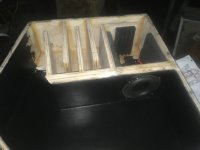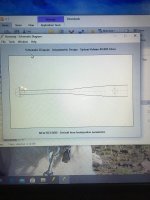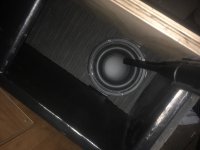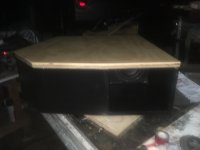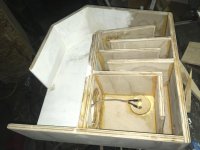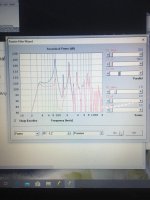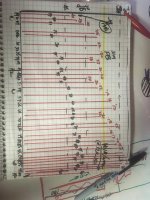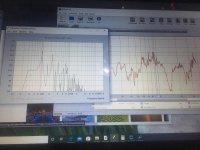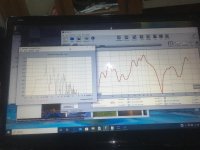Sick of huge cabinets that are hard to mess around with to change or alter in an effort to study ways to deal with the first harmonic in many qw subs, besides offset driver or not limited to a 4th order design path length. I made a very defined void above bandwidth in a design that allowed a lot of changes by adding solids at the driver throat end and/or the exiting area of a taped mouth section with a large expansion. This creating different CSAs that can affectively increase a mass loading scenario or undoing one...
The tang band was just lucky as I happened to have it for something else but this might work out to suit both needs(2.1 system with a Soundbar with 4” drivers and tweeters spread out under a bedroom tv and sub, and the experimental study thing or whatever think I’m looking for, lol)
The tang band was just lucky as I happened to have it for something else but this might work out to suit both needs(2.1 system with a Soundbar with 4” drivers and tweeters spread out under a bedroom tv and sub, and the experimental study thing or whatever think I’m looking for, lol)
Attachments
I plotted the response with a freq generated at individual single intervals, but I gained to realize at 100hz the app goes to 50hz intervals. Right where I wanted to see the MOST in order to play around with things to observe that void.... oops, I found a better app...
Attachments
You appear to have a Windows-based computer. Can you run REW?
It'll make measurements so much easier.
Chris
It'll make measurements so much easier.
Chris
You appear to have a Windows-based computer. Can you run REW?
It'll make measurements so much easier.
Chris
Hi Chris, I’m actually using the using the REW RTA to make that graph with a umm6 mic And a little bitty chip amp fed the frequencies from a smart phone. Unfortunately the app goes to 50 hz increments right where Ineeded to look (100+Hz), so I found a new one to use.
Last edited:
Okay, it sounds like you're using a tiny fraction of REW's potential.
Connect the chip amp to the PC's output, and click "Measure".
REW will run a sweep and produce a graph for you.
Chris
Connect the chip amp to the PC's output, and click "Measure".
REW will run a sweep and produce a graph for you.
Chris
Oh? I was having issues with the HP laptops audio settings... and signal via dats there’s some audio controls hidden beneath the initial settings that made some goofy results. Never sorted it out, instead I just switched to the seperate input
...Looking to see what I have for cables and adapters possibly to do as you described..lots of smart phone junk to hdmi and rca... maybe all that to usb or vice versa or cut/splice
...Looking to see what I have for cables and adapters possibly to do as you described..lots of smart phone junk to hdmi and rca... maybe all that to usb or vice versa or cut/splice
Last edited:
Okay, it sounds like you're using a tiny fraction of REW's potential.
Connect the chip amp to the PC's output, and click "Measure".
REW will run a sweep and produce a graph for you.
Chris
👍🏻👍🏻Thx Chris!!
Attachments
Last edited:
- Home
- Loudspeakers
- Subwoofers
- Tang band w5 experiment.
